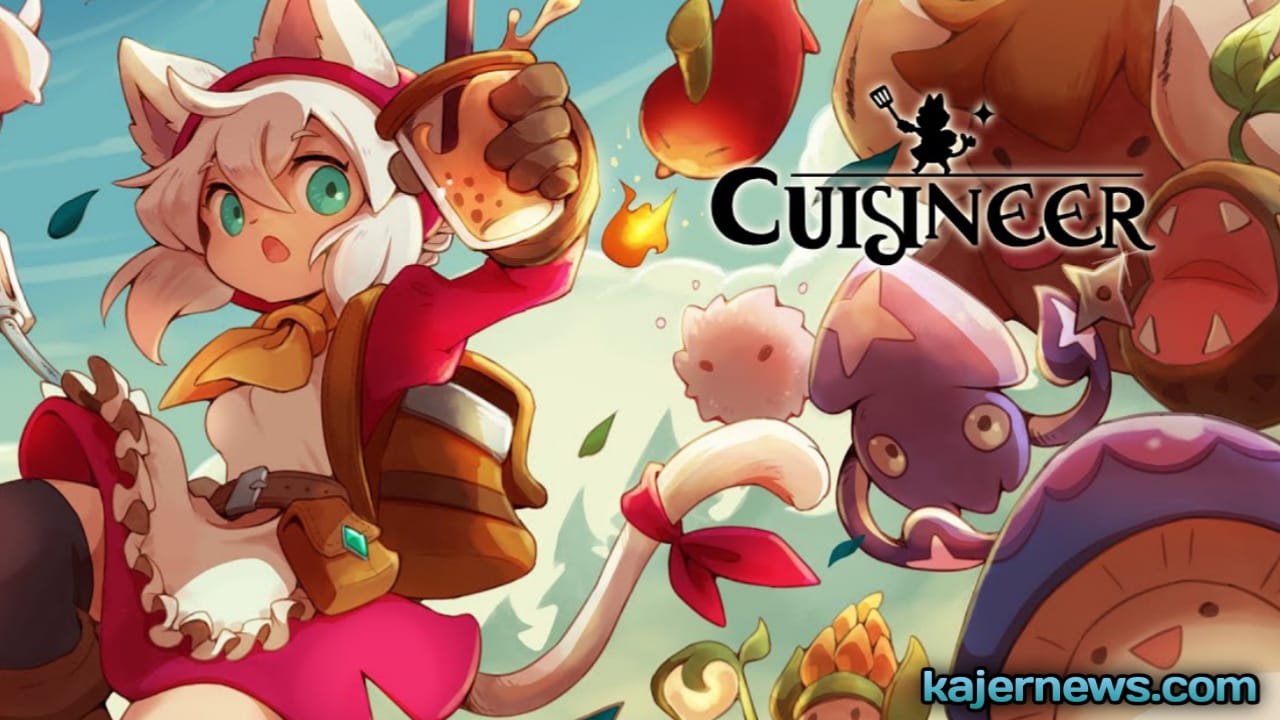ANALYSIS: “Cuisineer” Provides An Outstanding PC Game Loop
While cosy games and roguelites don’t generally go together, Cuisineer is an exception. It’s a food-focused game that will keep you engrossed for hours on end. If the gameplay doesn’t make you fall in love, then nothing will.
The visual presentation alone, with its stunning artwork and adorably beautiful character designs that span from the cutest chonk of a chilli pepper to the most lovely anthropomorphic wolf furniture manufacturer, will.
Cuisineer, a randomly generated dungeon game that embraces the roguelite genre, is a cross between Animal Crossing and Cooking Mama, developed by BattleBrew Productions and co-published by Marvellous Europe and XSEED Games. The plot is simple in and of itself. You take on the role of Pom, a catgirl who goes back to her birthplace of Paell.
She arrives expecting to meet her parents, only to discover that their restaurant has closed due to unbelievably high debt. Pom now has to reopen the restaurant and turn it become a success while paying the tax collector ever-larger sums of money—a true Tom Nookian scenario.
The goal of the game is to construct and furnish a flourishing eatery, dishing up meals from a recipe book that includes over 100 dishes and three distinct star levels. But in order to accomplish that, you must use your food- and utensil-based weaponry to explore a variety of dungeons, heal yourself with boba tea, and increase your stats and resistance with brews.
You must navigate the levels of dungeons in various locations to obtain ingredients. Each dungeon caters to a distinct background and is chock-full of the cutest food and animal-enemy artwork you can imagine. Finding a secure place to remember home might be the difference between carrying back a haul to keep the following few days’ meals produced and getting paid, or losing most of it if you die, after full your upgradeable bag or just running out of health.
However, cooking and dungeoneering are not tasks that can be completed in a single day. You must start your day cooking instead of being able to dungeon dive and cook at the same time. However, the longer you serve clients, the more exhausted you are, which reduces your maximum health when you enter the dungeon.
Selecting either option is therefore the wiser course of action, particularly if you aren’t using the game’s “mild” or “bland,” which are lower damage settings that facilitate dungeon progression.
That being said, the short day-night cycle does not always mean that one must choose between gathering supplies or preparing meals. Actually, it helps you manage your time and enhances the structure of the almost addicting game cycle. Cuisineer is possible to schedule lunch and evening rushes while still leaving time for a stroll around the town after managing your business by restricting the length of the day.
This is crucial since you’ll need to schedule time for furniture purchases, improvements, and conversations with the locals, all of whom can provide you with recipes through quests. Fortunately, the clock may assist you in making the most of your “day” by indicating the busiest times to generate money.

Because BattleBrew requires you to schedule your time, the game’s loop has been structured in an incredibly engrossing way. Selling food at your restaurant is the only way you can make money, and you need ingredients to do that. Upgrading your store is the only way to earn a lot of money in a day, but doing so requires resources (which you can only obtain in a dungeon) and money.
Each component of the game interacts with the others. After paying your taxes, you rely on the locals to add new foods to your menu, which boosts sales and elevates your restaurant’s standing.
You cannot finish tasks very quickly, even if you must select between those two options. Townspeople’s quests demand them to locate food, supplies, or substances that range in difficulty. Not everyone is in the town at once, so you have to put in the request as soon as you receive it. In order to finish the quest, you frequently have to wait one or two cycles, which lets you pace yourself and encourages you to keep playing.
A lot of the technical enjoyment of the game comes from how quickly it moves along, but you may also become immersed and shocked by the variety of dungeon kinds and enemies—especially when you start to face big monsters in various levels. You may also vary the duration of your dungeon stay by altering the fighting abilities you employ, all of which are naturally food-based.
It can have very distinct effects depending on whether you’re utilising a Salty, Sour, Sweet, Bitter, Umami, Frosty, or Toasty power to take out your adversaries each trip across the various locations.
If Cuisineer has one drawback, it’s that there aren’t many options for wallpaper or flooring when it comes to restaurant décor. A few simple colour changes may have added a lot more character to your restaurant’s development.
Although many furniture sets are made of various materials, the colour selection is so subdued and constrained that it might be challenging to coordinate with the stunning and colourful environment you are playing in. The furniture selections’ dullness really detracts from the vibrant and lively atmosphere of Paell and its inhabitants, which is ultimately what makes the game lacking in that one area.
Nevertheless, Cuisineer is an incredibly lovely and joyful game that encourages you to keep playing and discover more imaginatively stunning aspects everywhere you look. Pom makes a great protagonist, and as you play, it’s simple to develop a crush on one particular individual. You won’t want to set Cuisineer down, whether you’re running dungeon after dungeon or immersing yourself in Paell.
On November 9, 2023, Cuisineer will be accessible on Windows PCs through Steam.






